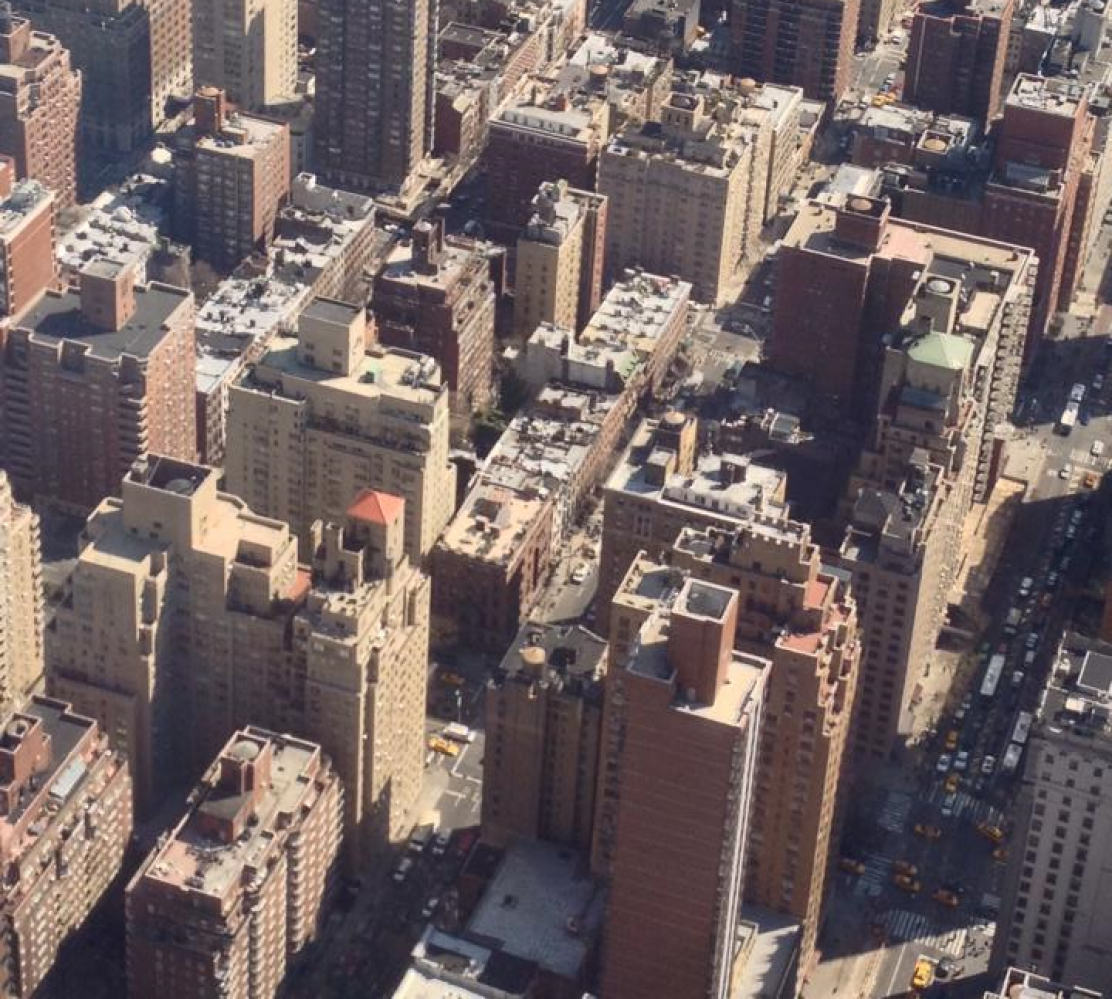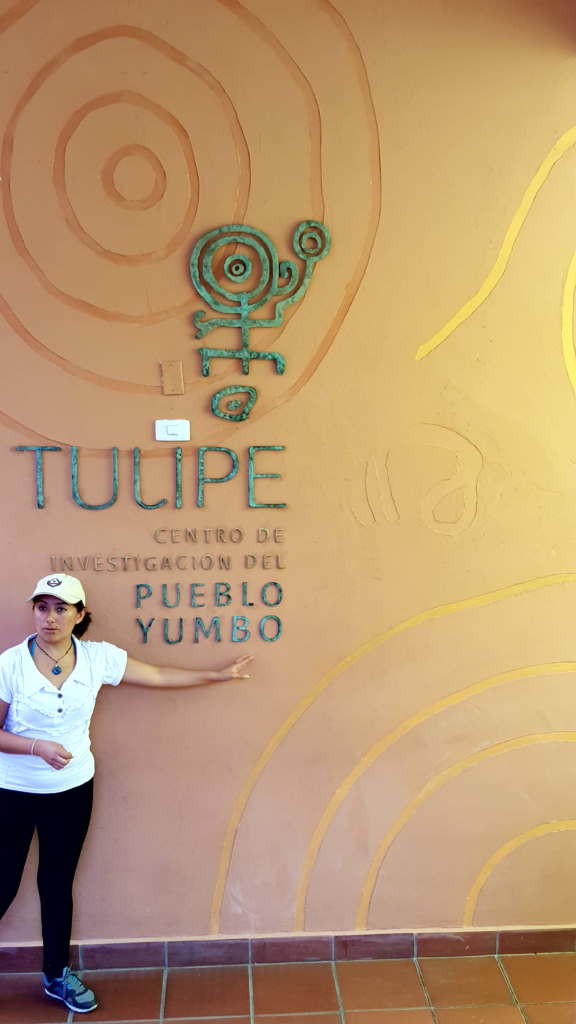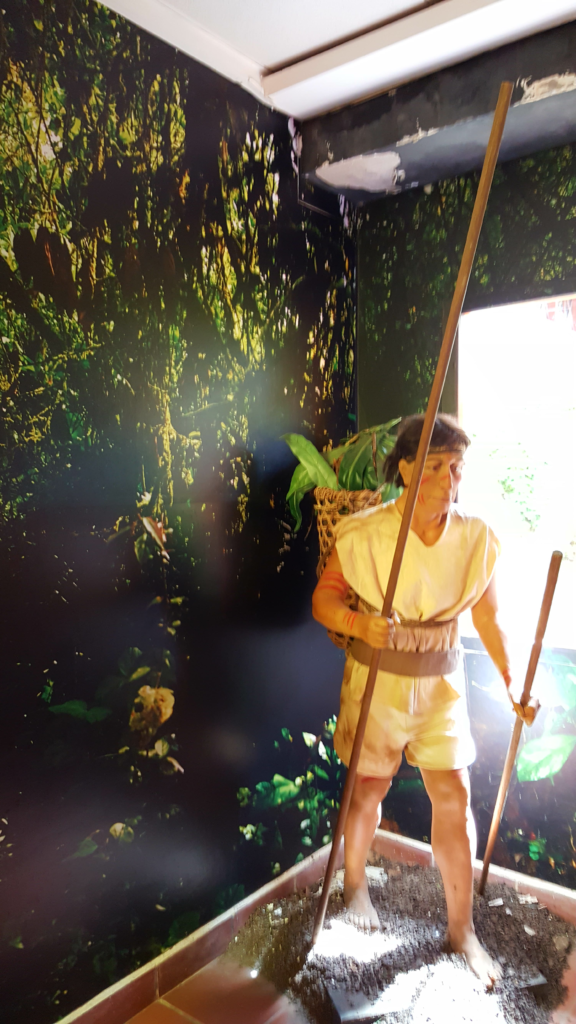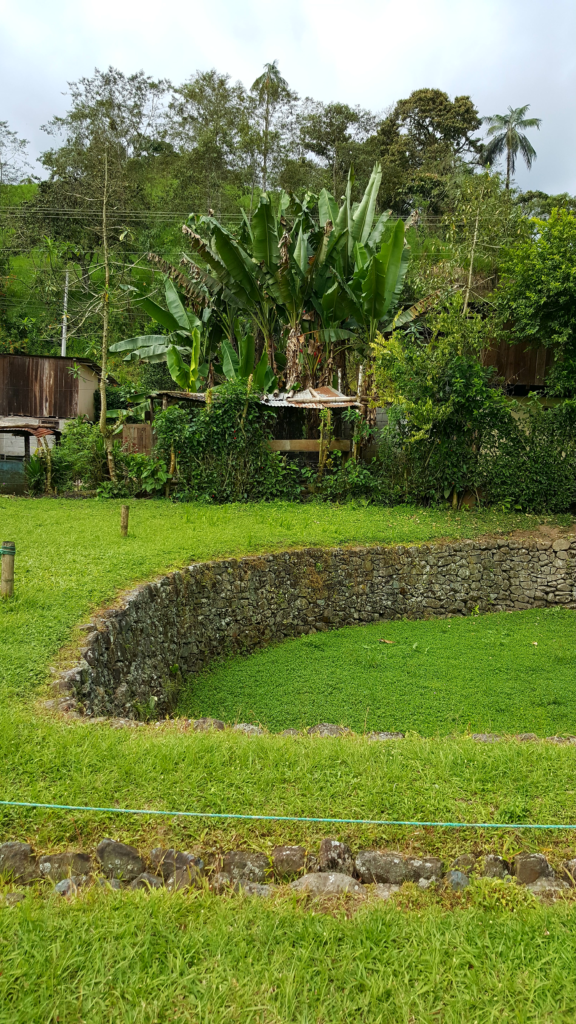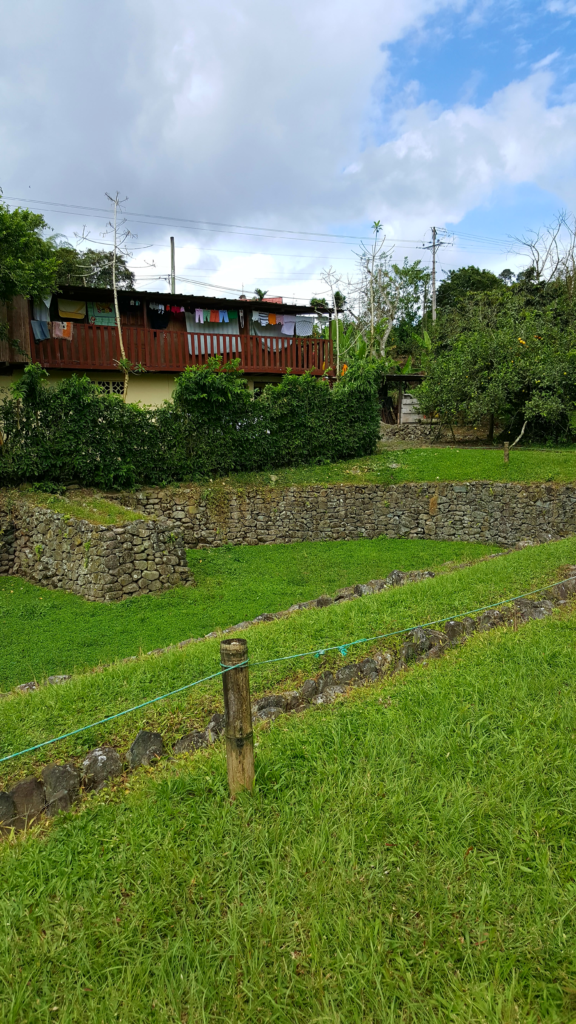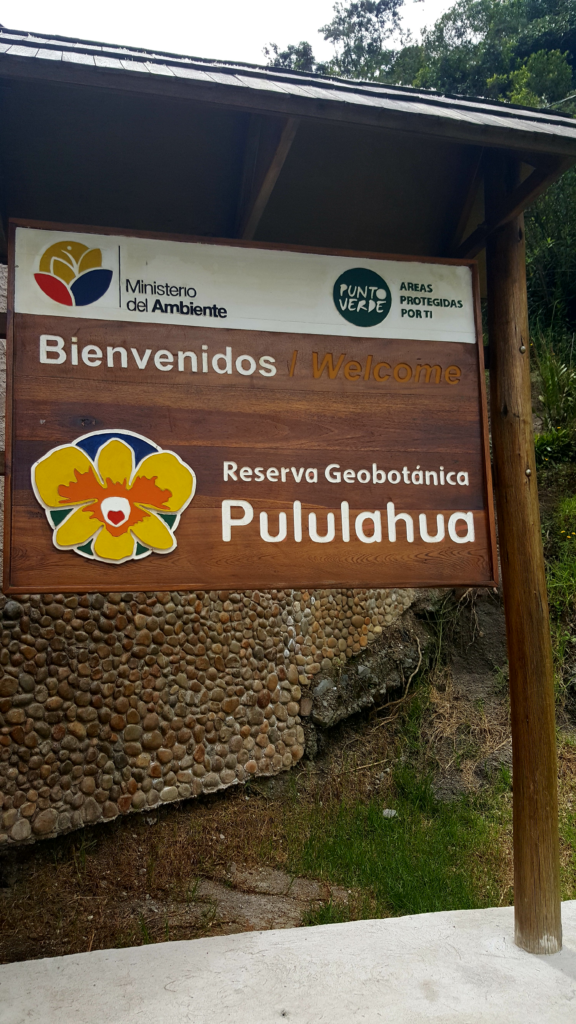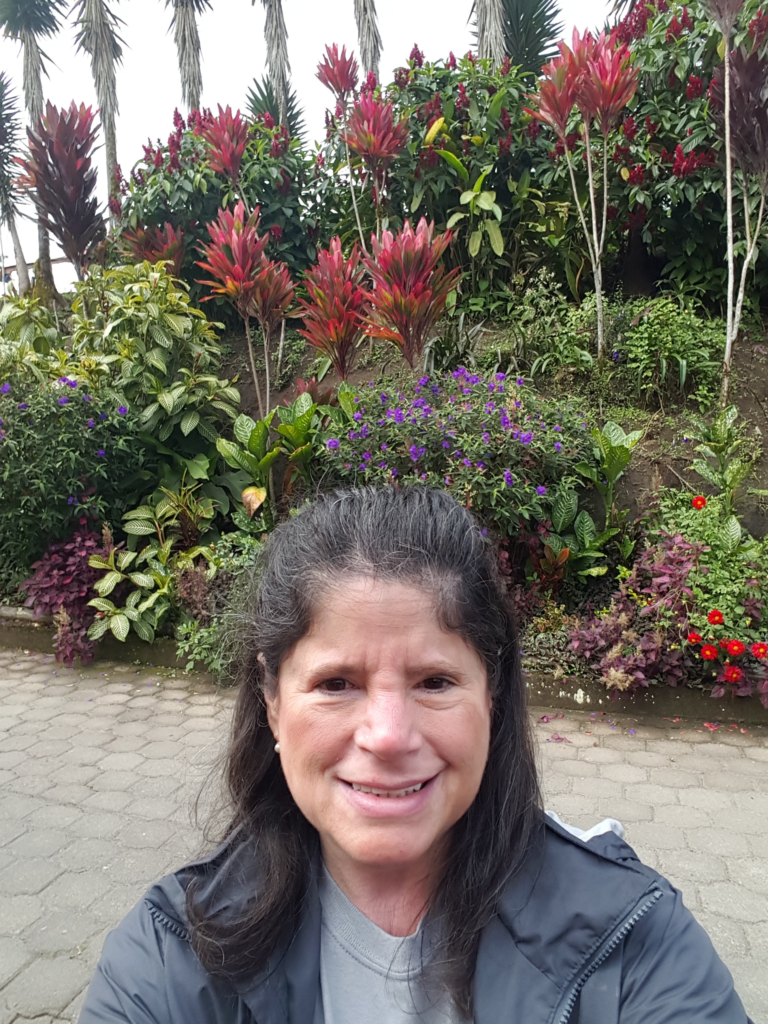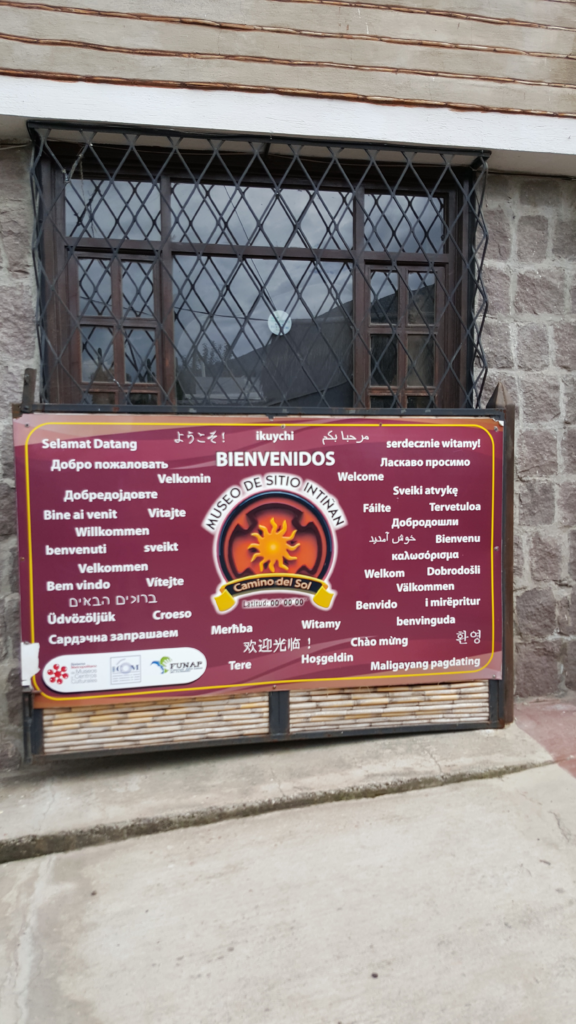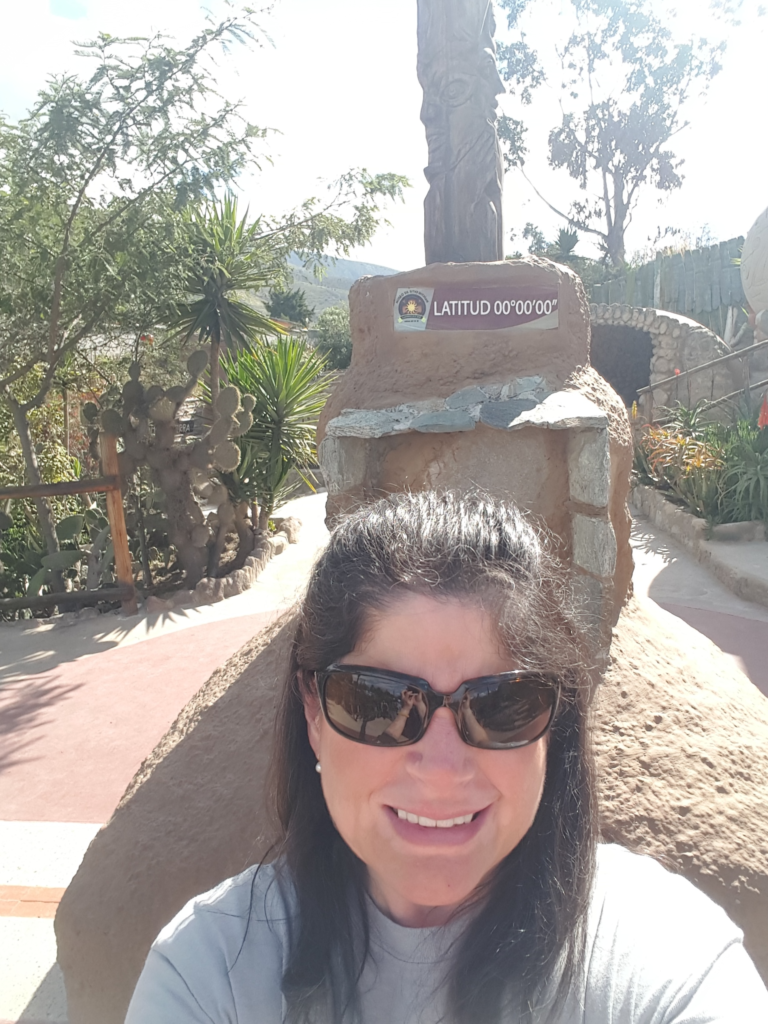On this day, the first thing on the agenda was to visit the the, “Tulipe Archaeological Museum”, located in a town named, “Tulipe”. This attraction consisted of both an inside and outside museum area. I found it fascinating. According to the tour guide, this museum was built right on the actual ancient site built by an indigenous culture called the Yumbo people, whom archeologists believed lived in that area between 800 and 1660 AD.
Archeologists believe that the typical Yumbo male looked like this and that when they traveled, they carried baskets full of supplies on their backs.
What was most interesting about this culture is that the archeologists who investigated the site found three distinct land formations, which appeared to be pools that were formally filled with water, that were apparently used as ceremonial sites by this society. Each one had a unique form and archeologists can only speculate what the different formation meant. Additionally, the pool shaped land formations are the original ones investigated by archeologists and they are located right in the back yard of the museum building.
Here is a picture of one of the pool shape formations.
Here is a picture of another pool formation.
Next, we walked around a crater created after the, “Pululahua Volcano of Ecuador”, collapsed approximately 2300-2500 years ago. This area has been declared by the law in Ecuador as a, “Geobotanical Reserve”. Here is a sign located in front of the site.
Here is a picture of me walking around the crater area posing in front of some native plants and flowers.
The third location we visited was the Ini-Nan Museum located around the corner from the, “Middle of the World”, monument. It has a website located here: http://museointinan.com.ec
Here is a picture of a sign located in the front of the museum entrance.
Here is a picture of me standing in the, “Middle of the World”, inside this museum.
